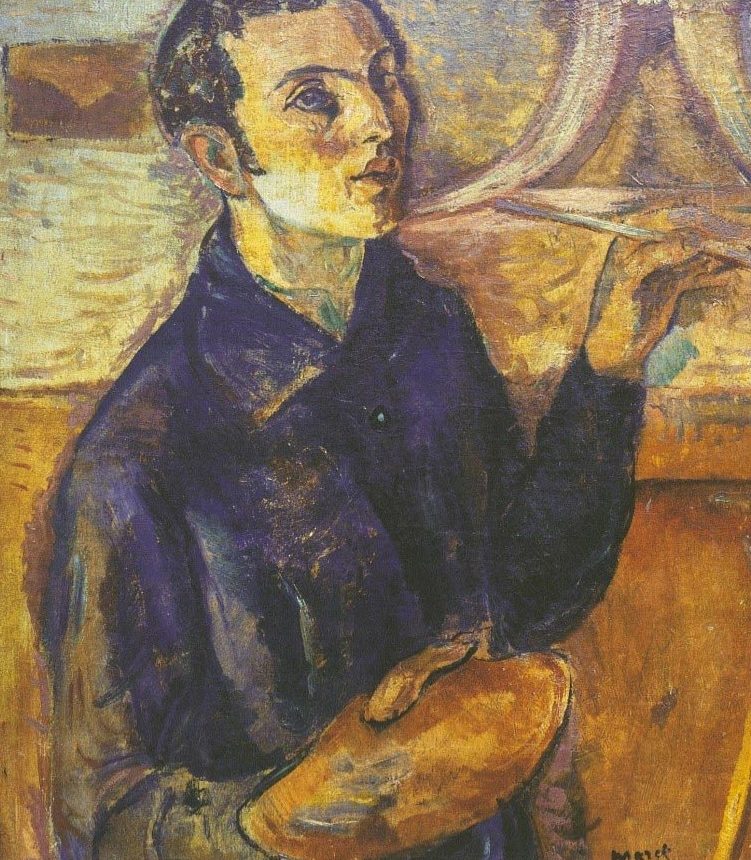Rahel SZALIT-MARCUS
January 4, 2019Paul ULLMAN
January 4, 2019Marek SZWARC
ZGIERZ (POLAND) 1892 – PARIS 1958
Marek Szwarc was born into a family of intellectuals. His father was a judge at the Zgierz Court and also conducted research on lost Eastern languages. He was murdered by the Nazis in 1940 as he was trying to protect his collection, which was burnt. Marek studied at the heder and at a Polish high school in Lodz. His first works, which he had produced at the age of fourteen, disappeared during World War II. In 1910, he arrived in Paris, settled at La Ruche and took Antoine Mercier’s classes at the Ecole des Beaux-Arts. At La Ruche, he was in touch with other Jewish artists. With Chaikov and Lichtenstein, he founded Makhmadim (delights), which was the first Jewish art journal with neither text nor manifesto. Only a few issues were published and distributed by the artists themselves.
In 1914, while he returned to Poland for his vacation, the war broke out. He was exempted from military service thanks to a letter by Antoine Mercier to his friend the Tsar. The year 1919 marked the beginning of a new epoch for Marek Szwarc. He married Eugenia Markowa and settled with her in Paris. In 1920, he and his wife converted to Catholicism; the artist was then going through a difficult time. His conversion shocked his friends and family. His family banished him and he was ostracized and cut off from the world. This mystical man considered that he was at the same time Jewish and close to the Christian religion. Most of the works he produced at that time were bas-reliefs representing mainly Biblical and evangelical subjects. In 1921, he met police chief Zamaron who bought some of his works. He produced bas-reliefs for the pontifical pavilion at the International Exhibition in 1937.
In 1939, Marek Szwarc enlisted in the Polish army as the war gave him a reason to fight Hitler. After serving in the army for three years, his superiors sent him to London in order to answer to Cardinal Hindsley’s order: a hammered silver plate. London was a new turning point in his prolific creative production. During that time, he worked exclusively on sculptures and hammered copper. In 1945, he returned to Paris with his family and acquired French nationality. He settled in his studio in 65 boulevard Arago, where he remained until he died. An important collection of works by Marek Szwarc, acquired by Georges Brazzola, was offered to the Musée d’art et d’histoire du Judaisme in Paris after the artist’s death.
Stories of Jewish Artists of the School of Paris 1905-1939
FRENCH-ENGLISH
Capitale des arts, le Paris des années 1905-1939 attire les artistes du monde entier. De cette période de foisonnement, un terme est resté, celui d'Ecole de Paris, qui recouvre une grande diversité d'expression artistique. Dans ce brassage dont Montparnasse est le creuset, un groupe se distingue : celui des artistes juifs venus de Russie, de Pologne et d'Europe centrale. Si leurs styles sont variés, un destin commun les rassemble : ils fuient l'antisémitisme de leur pays d'origine. Certains ont connu la célébrité dès les années 1920, tels Soutine, Lipchitz ou Chagall. D'autres n'ont pas eu le temps ou la chance d'y accéder. Près de la moitié a péri dans les camps de concentration nazis.
From 1905 to 1939, Paris attracted artists from all over the globe as the capital of the art world. This period of artistic proliferation became known as the School of Paris, and includes a great diversity of artistic expression. Within the teeming art world centred on Montparnasse, one group set itself apart: Jewish artists from Russia, Poland, and Central Europe. Although their styles were diverse, they shared the common fate of fleeing anti-Semitic persecutions in their home countries. Some became famous in the 1920s, such as Soutine, Lipchitz, and Chagall, while others did not have the time or the luck to gain renown. Nearly half of these artists died in Nazi concentration camps.





